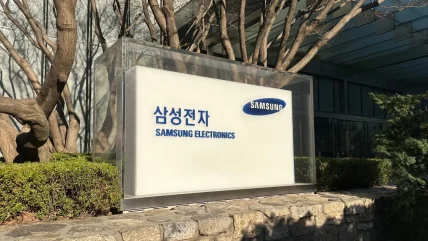
Samsung is reportedly set to reduce up to 30% of its overseas workforce in certain divisions, according to a Reuters report citing three sources familiar with the matter. The South Korean electronics company has instructed its global subsidiaries to cut sales and marketing staff by approximately 15% and administrative staff by up to 30%, the news agency said.
A source indicated that the proposed plan is expected to be implemented by the end of this year. This move is projected to impact jobs across various regions, including the Americas, Europe, Asia, and Africa.
In addition, six other undisclosed sources aware of the situation confirmed Samsung’s global headcount reduction plan, though specific details such as the number of employees affected or the countries and business divisions most impacted remain unclear.
Samsung job losses
According to Samsung’s statement cited by Reuters, the workforce adjustments at some of its overseas operations were routine and largely aimed at enhancing productivity. Additionally, claimed the chaebol, the layoffs do not target production staff.
The South Korean company employed 267,800 people globally, with more than half based outside South Korea, according to the company’s latest sustainability report released in June this year. The majority of these roles are in manufacturing and development, while about 25,100 staff work in sales and marketing, and 27,880 are employed in other areas.
A direct source told Reuters that the global mandate on job cuts was issued about three weeks ago, with Samsung’s Indian operations already offering severance packages to some mid-level employees who have departed in recent weeks. The source also noted that the total number of employees expected to leave Samsung India could reach 1,000 (the firm employs nearly 25,000 people in the country.)
The job cuts come as Samsung faces increasing pressure on its core business units. The company’s semiconductor division has been slower to recover from a major downturn in the chip industry, which led to a 15-year low in profits last year.
In response, Samsung replaced the head of its semiconductor unit in May 2024 to address the chip crisis and catch up in delivering high-end memory chips used in artificial intelligence (AI) systems.
Workforce anxieties
Reuters also reported that the job cuts are being made in anticipation of a slowdown in global demand for technology products, as economic conditions worsen. This is in spite of the fact that the company reported a huge leap of 1,458% in its operating profit for the second quarter of 2024.
In a separate announcement, Samsung said that it had commenced mass production of its one-terabit (Tb) quad-level cell (QLC) 9th-generation vertical NAND (V-NAND). The mass production is expected to solidify Samsung’s leadership in the high-capacity, high-performance NAND flash market.
Adding to Samsung’s job cuts, another semiconductor major, Intel, announced plans to lay off approximately 15% of its workforce as part of a cost reduction programme last month. This initiative is aimed at achieving savings of more than $10bn by 2025, with the goal of increasing efficiency and market competitiveness. Intel’s decision, which was part of the company’s financial results for Q2 2024, will impact nearly 15,000 employees of the semiconductor company.






